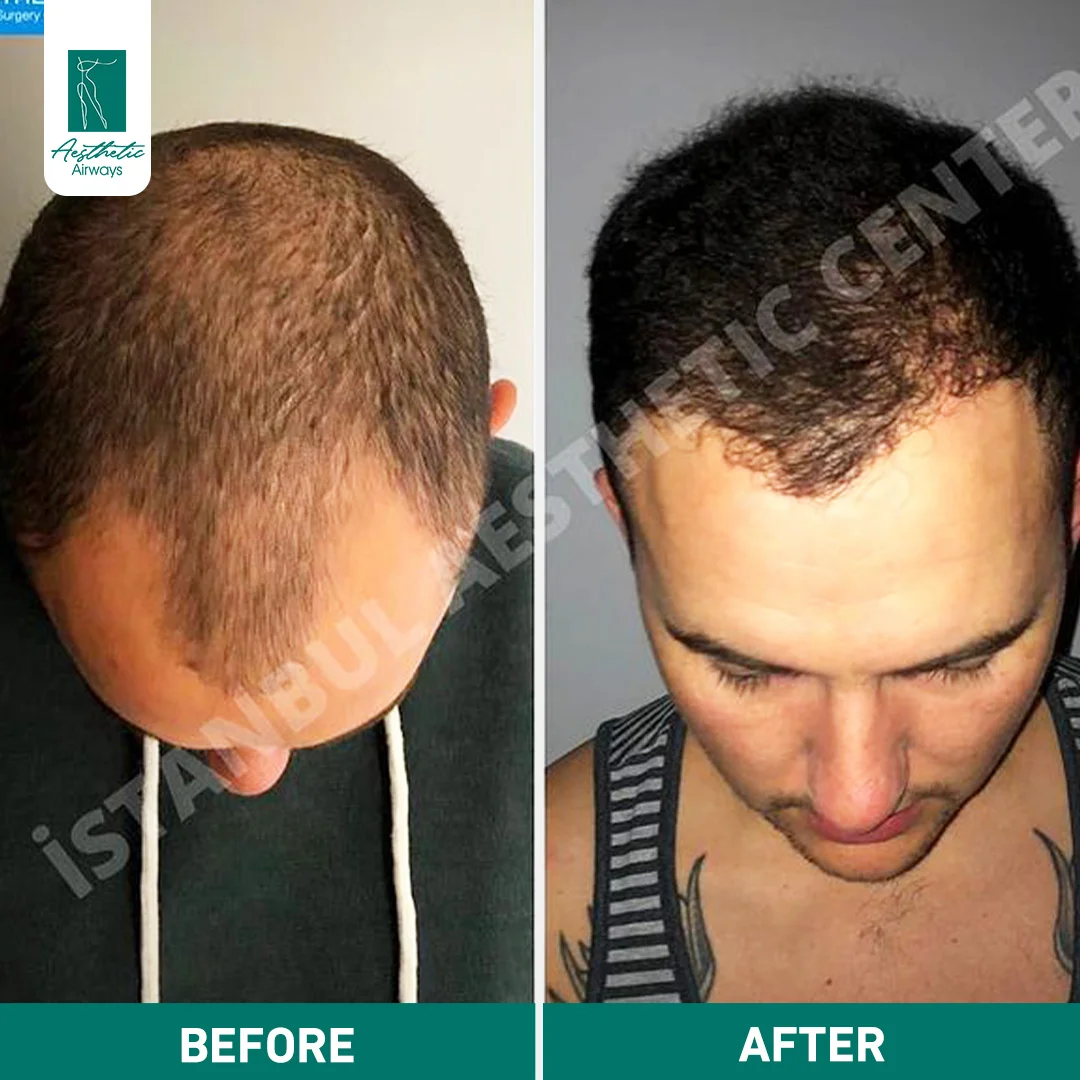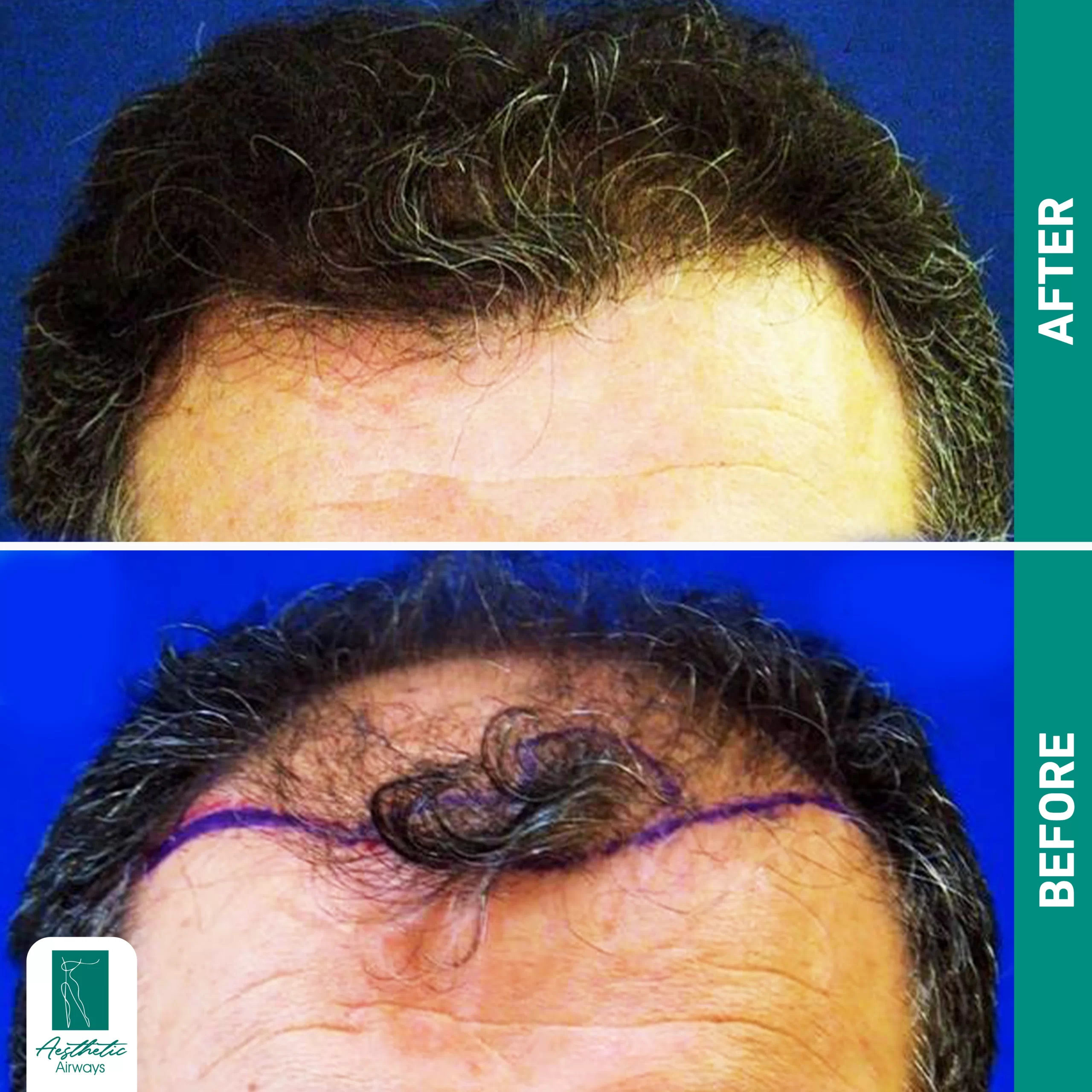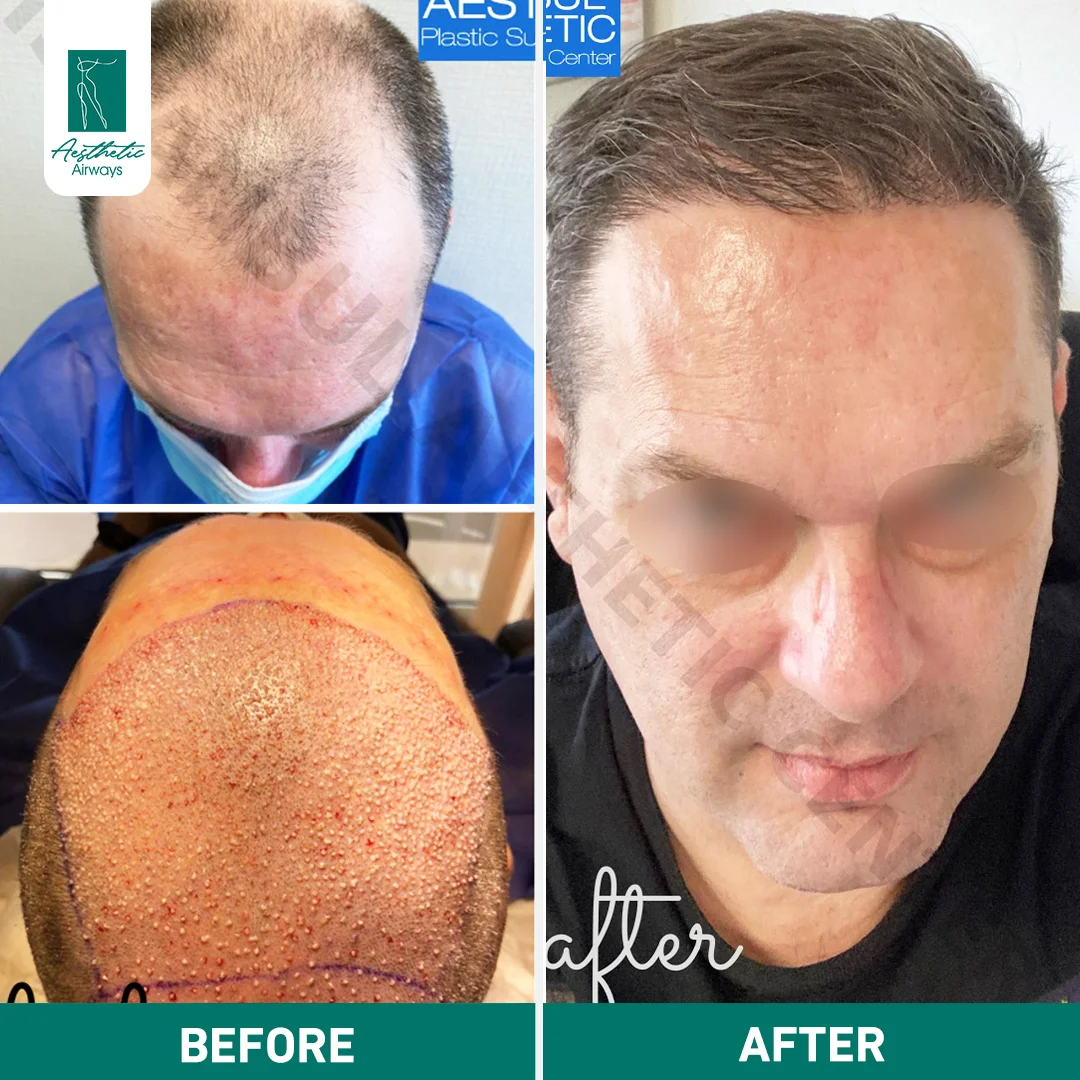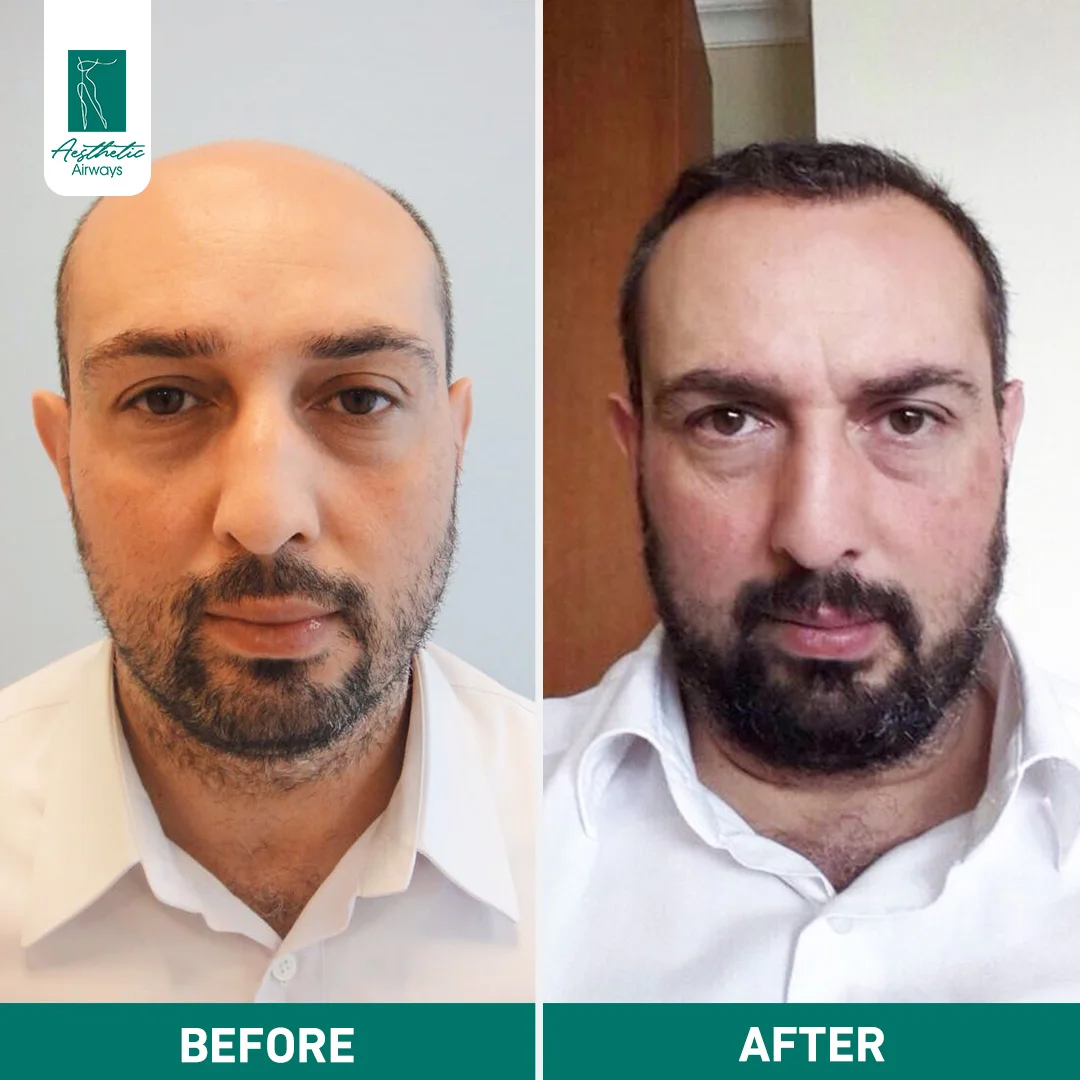FUE Hair Transplant in Turkey
FUE (Follicular Unit Extraction) Hair Transplant
Hair loss is a common concern for many people. It can significantly impact one’s self-esteem and confidence. Fortunately, many hair restoration techniques have emerged, and one of these techniques is the FUE Hair Transplant. FUE stands for Follicular Unit Extraction, it is a minimally invasive procedure that involves extracting individual hair follicles from one area of the scalp, typically the donor area at the back or sides of the head, and transplanting them to the balding or thinning areas, known as the recipient area. Unlike traditional strip transplantation, FUE does not leave a linear scar, making it a preferred option for those seeking a more discreet approach.
Benefits of FUE Hair Transplant
FUE hair transplant is a very popular solution for a number of reasons. Besides transforming your self-esteem, it also offers many benefits, including:
- Minimally invasive: FUE leaves tiny circular scars that are barely visible, making it a more aesthetically pleasing option.
- Faster recovery: FUE requires less downtime and discomfort compared to strip transplantation.
- Versatility: FUE can be used to transplant hair from various donor areas, including the chest, beard, and arms.
- Suitable for all hair types: FUE is effective for treating hair loss in individuals with curly, wavy, or Afro-textured hair.
Natural Results with FUE
The success of FUE hair transplant depends on the expertise of the surgeons and their ability to extract and transplant hair follicles with precision. A skilled surgeon will meticulously select and extract follicles from the donor area, ensuring minimal damage to surrounding tissues. They will then implant these follicles carefully into the recipient area, mimicking the natural direction and density of existing hair.
DHI vs. FUE Hair Transplant Techniques
Both FUE and DHI are minimally invasive hair transplant techniques that involve extracting individual hair follicles and implanting them into the recipient area. However, the key difference lies in the implantation process:
- FUE: in FUE, the extracted hair follicles are stored in a temporary holding area before being implanted into the recipient area.
- DHI: in DHI, the extracted hair follicles are directly implanted into the recipient area immediately after extraction, reducing the risk of follicle damage.
Choosing between FUE and DHI depends on individual factors and the surgeon’s preference and expertise. Both techniques can achieve natural-looking results with minimal scarring.
Men’s Hair Transplants
Hair loss is very common in men. It is primarily caused by androgenetic alopecia, which is a genetic condition that affects approximately half of all men by the age of 50. This condition is influenced by hormones which leads to hair loss.
What causes hair loss in men?
Hair loss in men is primarily attributed to genetic predisposition, a condition known as androgenetic alopecia. This hormonal condition causes hair follicles to gradually shrink and produce thinner, shorter hair, leading to balding or thinning in specific areas of the scalp.
How FUE hair transplants can address hair loss in Men’s
FUE hair transplant offers an effective solution for men seeking to restore density and fullness to balding or thinning areas of the scalp. It is an ideal solution for various hair loss patterns, including receding hairline, thinning crown, and diffuse thinning.
How long do the results of FUE last?
FUE is known for its benefits as well as longevity. It provides permanent results, and the transplanted hair follicles will continue to grow naturally.
Am I a suitable candidate for FUE?
Determining whether you’re a good candidate for FUE or not depends on a number of factors. It is essential to consult a qualified surgeon, and they will guide you toward the right solution. However, men with stable hair loss patterns and a healthy scalp are good candidates for FUE in general.
How is the FUE procedure performed?
The FUE procedure is performed by the following steps:
- Scalp Preparation: the surgeon will clean and numb your scalp to minimize discomfort during the procedure.
- Follicle Extraction: the surgeon will then extract individual hair follicles from the donor area using a specialized tool.
- Follicle Preparation: in this stage, the extracted hair follicles are prepared for implantation.
- Recipient Site Creation: the surgeon will create tiny incisions in the recipient area to receive the transplanted follicles.
- Follicle Implantation: finally, the extracted hair follicles are meticulously implanted into the recipient area.
How is the FUE procedure performed?
After the FUE procedure, you are expected to experience mild discomfort, redness, and swelling in the treated area. Your doctor will most likely prescribe some pain medication, and provide you with instructions that you will need to follow. However, the recovery process is typically short and uneventful, and you will most likely be able to resume your normal routine within a few days.
FUE Hair Transplant Before and After
.








